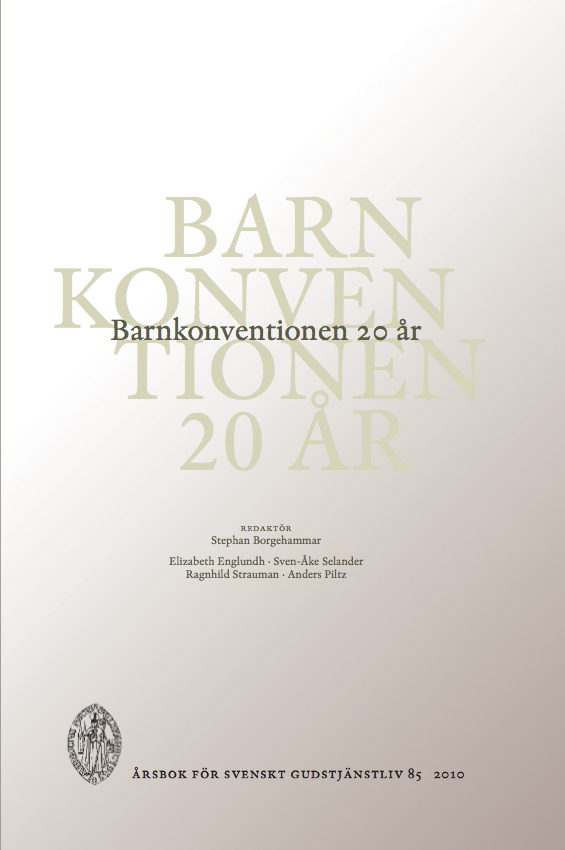Kristocentriska korrekturer av medeltida Mariasånger i Norden
Abstract
Dogmatic Corrections of Medieval Marian Songs in the Nordic Countries
The Protestant reformers Luther, Calvin and Zwingli accepted the Catholic doctrines that the Blessed Virgin Mary is the Mother of God and semper Virgo. They could not admit, however, any invocation of Mary or other saints in the liturgy or in private prayer, nor the concept of secondary mediation of grace through the saints in heaven. This attitude created a problem: many popular songs were addressed to Mary, and in order to use them (and their tunes), the Lutheran theologians had to purge them doctrinally and redirect the prayer to Jesus Christ. This dilemma is manifest in the case of Piae Cantiones (PC), a collection of Medieval Latin songs. The music is of a remarkably high quality. Although these songs are not liturgical in the strict sense, most of them have a religious content. They were intended as a tool for training in Latin and ostiatim (door-to-door) singing, an important source of income for young scholars.
PC was printed for the first time in Greifswald in 1582 (later editions were to follow) by a Finnish student at the University of Rostock, after due examination and approval by the Chapter of Turku Cathedral in Finland, a Lutheran stronghold. Part of the repertory is attested in other sources, and interior as well as exterior criteria suggest that several texts containing overt invocations of the Blessed Virgin Mary had been expurgated and corrected theologically in the editio princeps. These textual alterations were made in a rather mechanical fashion. All invocations of the Blessed Virgin were redirected to God or Jesus Christ.
Similar principles of theological correctness were adopted by Hans Thomissøn, who published an important Danish hymn book in Copenhagen in 1569. Thomissøn included several »popish» songs in his repertoire after due dogmatic expurgation.
Independently of official printed versions, at least some songs from PC were still in use in Swedish schools in the late eighteenth century, through oral tradition, perhaps in their original version.
In 1852, the British ambassador to Sweden presented a copy of the extremely rare first edition of PC to the Anglican priest, scholar and hymn-writer John Mason Neale. Neale exploited some of the songs in his Carols for Christmas-Tide 1854, in which the most well-known item is »Good King Wenceslas» for Boxing Day, its tune being taken from »Tempus adest floridum». The songs were re-edited by the Anglican hymnologist G. R. Woodward in 1910. Woodward did not just reprint the texts of 1582, in which the Marian poems had been expurgated so as to correspond to an orthodox, Lutheran, strictly Christocentric theology. Instead, he published the restituted versions found in Blume and Dreves, Analecta hymnica medii aevi (especially vol. 45a, published in 1904).
The Lutheran rejection of the Roman Catholic cult of the Virgin Mary was still an operative factor when the Swedish Lutheran Church adopted new hymnals in the twentieth century. Certain Marian songs of Catholic origin were admitted with slight dogmatic corrections, whereas the radical re-writing of Salve Regina as a hymn to Christ (»Evige Konung», »Eternal King») was rejected, not for any dogmatic or aesthetic reasons but because it was felt to be a somewhat strained project to adopt a beautiful form without its original content.
Keywords: Piae Cantiones, Mariology, Marian songs, Reformation hymns, hymnology.
Downloads
Publicerad
Nummer
Sektion
Licens
© författarna, Laurentius Petri Sällskapet för svenskt gudstjänstliv samt Artos & Norma bokförlag. Det är tillåtet att kopiera och använda material ur Svenskt Gudstjänstliv för forskningsändamål om källan anges. För övriga ändamål kontakta respektive artikelförfattare samt förlaget. Särskilda restriktioner kan gälla för bildmaterial.


